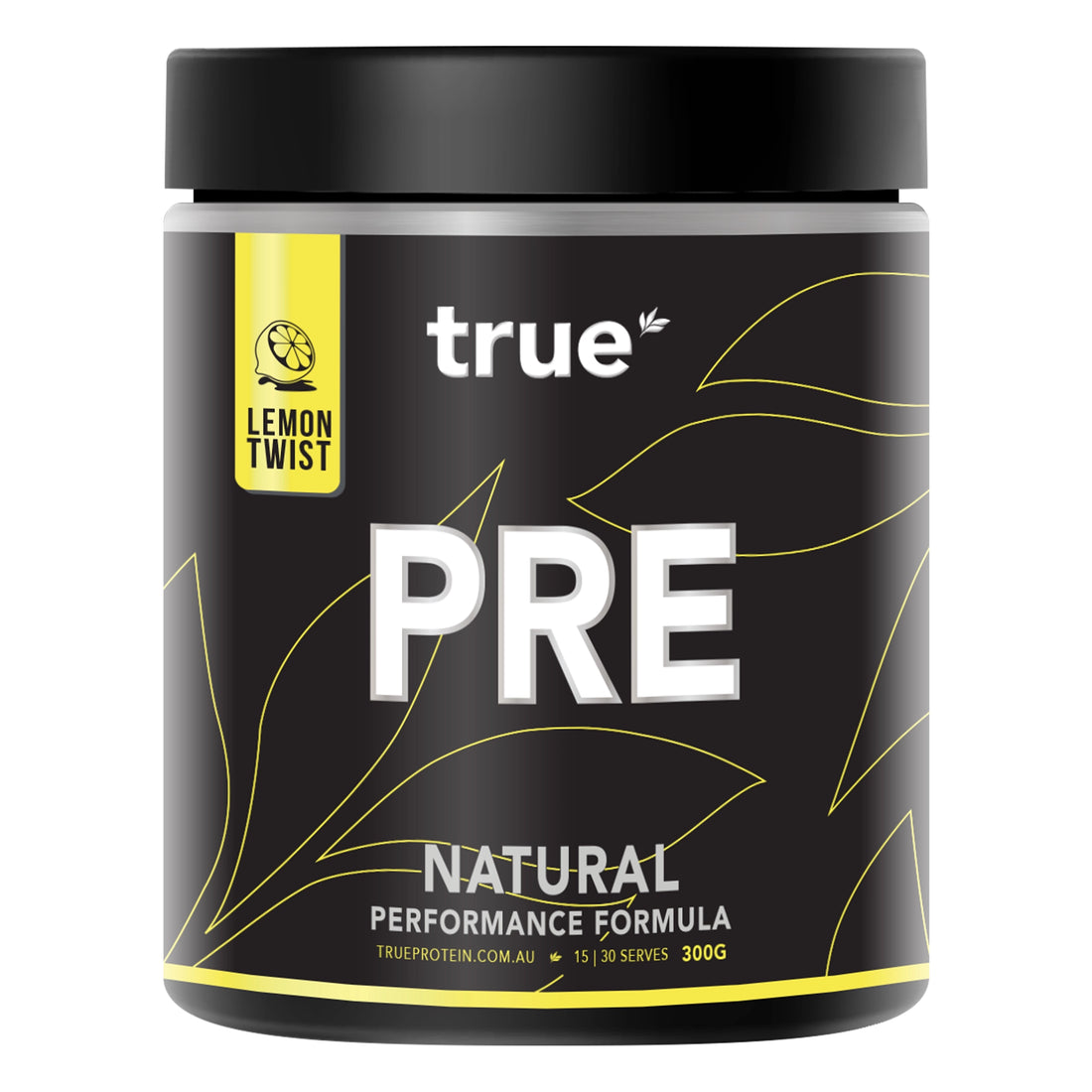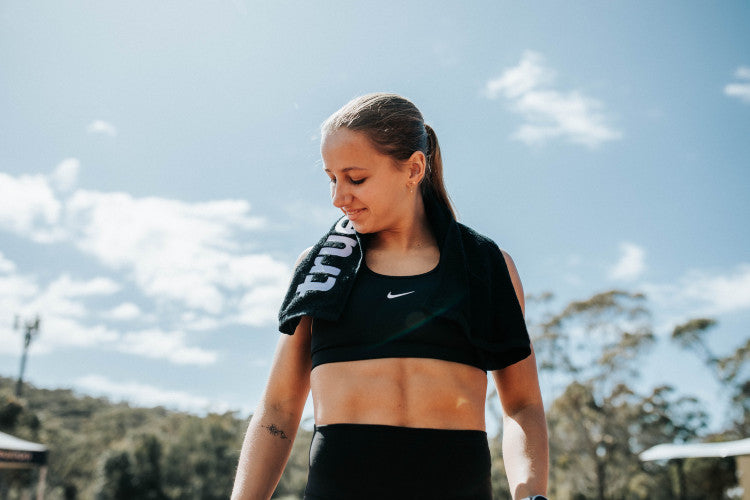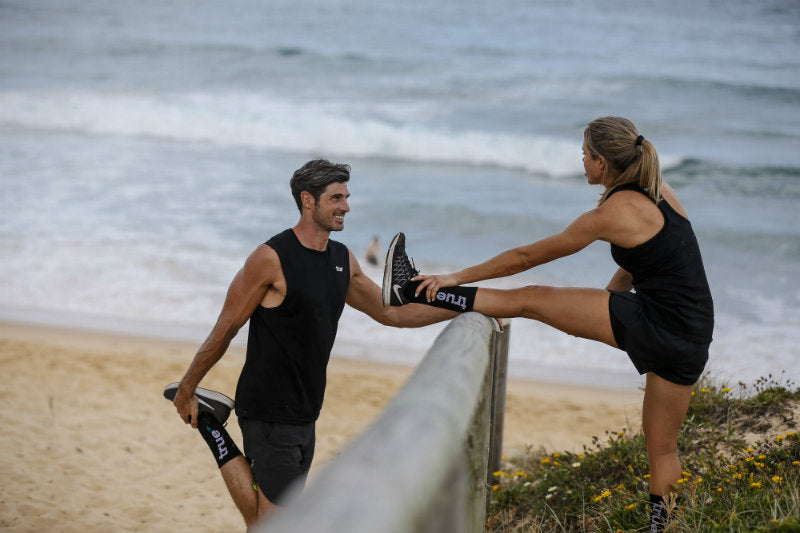Firstly, let's explain your trunk and what it does. Your trunk is made up of different layers of muscles: deep muscles and superficial muscles (muscles on the surface).
-
The transverse abdominis is the deepest of the core muscles. Its function is to stabilise the lumbar spine pelvis before the movement of limbs occurs.
-
The rectus abdominis plays a vital postural role, facilitates the movement of the torso and spine, and ensures a neutral position of the pelvis.
-
The external obliques, which run on either side of the rectus abdominis, allow the trunk to twist. So, if you are moving correctly, your left external oblique will contract the internal oblique muscles. The internal oblique muscles flank the rectus abdominis and are located just inside the hipbones. They operate in the opposite way to the external oblique muscles. For example, twisting the trunk to the left requires the left internal oblique and the right external oblique to contract together.
Your core is so much more than just a six-pack and worth a lot more than a 'few crunches' at the end of a workout. It's responsible for our everyday movements, helps us breathe efficiently, helps us achieve good posture, and allows us to build strength. Make it purposeful.
Functionality and Performance
The reason I'm creating this is to encourage people to put a different lens on the way they view their abdominal work. No matter your age, occupation, lifestyle or fitness goals, this applies to you. My aim is to urge my clients to appreciate their core for its significant role in their movements and understand the benefits of having a strong core for more than just an aesthetics project.
Your core is at the centre of your body for a reason. Your core is instrumental in sagittal, frontal and transverse plains of movement. From those everyday movements to performance work, it is a strong core that will ease and enhance these movements.
Think of your body as a chain running from your fingertips to your toes. If you have a weak link in the chain, it won't function as well as it could. Your core muscles are the base of support for your entire body. A weak core can be the root cause of many injuries and can even affect the ease of your breathing.
During push-ups, are your hips sagging? Is your lower back arching? Is your stomach is touching the ground first? In deadlifting does your back take the load and cause you pain, or are you forced to hunch forward and extend your back?
Core strength can also be responsible for your endurance or persistence in an exercise, even if that exercise is not isolating your abdominals.
It's my aim to encourage people to familiarise themselves with how to activate their trunk muscles. You may think you are working your core thoroughly in compound training, but if you lack the activation of that muscle group, you will be placing dominance elsewhere.
How to "Engage Your Core"
A lot of personal trainers say, 'engage your core.' Having taught children for years, I know that saying that doesn't really work. Not even with adults. If someone doesn't know what that feels like, how are they going to 'just engage their core'? How can I explain it?
If I'm explaining an exercise to my clients, I tell them to imagine I am about to punch them in the stomach. Go on do it now. Imagine I'm coming in with a huge punch and you brace your core in preparation for the impact. Your core is now engaged.
For lower-body movements, another way to do this is to focus on pulling up your pelvic floor muscles with each repetition (pretend you have to pee and that you need to hold it). This will engage the deep transverse abdominis muscles.
You must familiarise yourself with what this feels like and allow yourself to explore different exercises; both isolation and compound exercises that include core engagement. It's important to exercise the core in compound movements as it plays a key role of stabilising, therefore is consistently working, utilising the chain of movement and exercising the reliance of our limbs on the core.
So which exercises are best to engage our core? Some of my favourites are explosive movements, which recruit your entire core to stabilise and propel you, resulting in maximum ab engagement.
Balancing can indirectly work the abdominals by turning them on to help stabilise your body. For example, single-leg deadlifts fire up your obliques to keep you balanced as you hinge from your hips and extend one leg behind you while lowering a weight toward the floor with the opposite hand.
In running, when you run fast or up hills, your arms have to move quickly to help propel you, and this requires your abs to work harder.
I personally love slamming or throwing a dead ball for ab engagement. Exercises like the overhead ball toss and the lunge with rotational ball toss steady the pelvis and lower body to keep you supported while you toss the ball, and they help you accelerate as you throw and decelerate as you catch.
Remember, it's important to maintain good form in every move and, if you are not confident in your technique then you will increase your risk of injury.
Finally, please note that this programme is to supplement your current training programme as a two-week abdominal focus. This programme consists of five days per week and can be done at any time of day. Remember to rest for two out of seven days from this programme.
Which Supplements to Pair
To get fired up for your workouts, True PRE is always a winner. Available with and without caffeine and high in muscle-building amino acids, PRE will get help get you through some of the more challenging movements!

PRE
Pre-workout formula to boost energy, focus & strength
- Regular price
-
$70.00 - Regular price
-
- Sale price
-
$70.00
Quick Buy
For your post workout needs, a protein supplement can aid in muscular recovery and growth. Try WPI 90 or Vegan 85 for a tasty blend with a full spectrum of essential amino acids.
.jpg)

Week 1
Day 1
Equipment needed: Small resistance band, medicine ball, plate
Method: 16 repetitions each exercise/1 set on each exercise/2 rounds
- Single leg crunch
- Russian twists (don't cross your legs over as it disengages your adductors)
- Resistance band upper body hold (with straight arms) and single-leg dead-bug
- Overhead walking lunge (holding plate out in front of you, dipping it to your left side then right side before stepping forward for the next lunge)
- Windscreen wipers
Day 2
Equipment needed: Plate, dead ball
Method: Tabata training - 20 seconds of work/10 seconds of rest/4 sets on each exercise/1 round
- Jack knife with heavy plate
- Bench hops
- Dead ball slams
- Russian twist with a plate
Day 3
Equipment needed: Swiss ball, a bar for leg raises, medicine ball.
Method: 45 seconds/20 seconds rest/2 sets on each exercise/1 round
- Swiss ball pass-throughs
- Crunch on a swiss ball
- Hanging leg-raises (single leg)
- Sit up with a medicine ball hold (full arm extension)
- Swiss ball plank
Day 4
Equipment needed: Swiss ball, bench
Method: 30 seconds/15 seconds rest/3 sets on each exercise/1 round
- Right side plank with pulse
- Left side plank with pulse
- Walkout into reach and hold for 5 counts
- Superman position on a bench (one arm, one leg extended in front of you and one behind you)
- Single leg crunch with a 2-second hold
Day 5
Equipment needed: None
Method: 60 seconds on every exercise/20 seconds rest/1 set on each exercise/2 rounds
- Army crawl plank position
- Commandos
- Right side plank crunch
- Left side plank crunch
- Hollow rock
Week 2
Day 1
Equipment needed: Plate, dead ball.
Method: Tabata training - 20 seconds/10 seconds rest/4 sets on each exercise/1 round
- Dead ball sit up with overhead slam between legs
- V-sits
- Russian Twist
- Single leg Jackknife with a plate
- Bear crawl
Day 2
Equipment needed: Small resistance band, medicine ball
Method: 20 repetitions per exercise/1 set on each exercise/2 rounds
- Lunge with medicine ball slam and catch on each side
- Single leg crunch with resistance band overhead hold
- Woodchop with resistance band (emphasis on obliques)
- 90-degree crunch (elbows right then left)
Day 3
Equipment needed: Small resistance band, plate, dumbbells
Method: 16 repetitions each exercise/1 set on each exercise/2 rounds
- Single leg crunch with a 5-second hold in crunch
- Banded plank army crawl
- Backwards lunge walks with a plate overhead
- Renegade row with dumbbells
- Plank with alternate hand and foot off the ground
Day 4
Equipment needed: Ab wheel, swiss ball
Method: 45 seconds/20 seconds rest/2 sets on each exercise/2 rounds
- Ab wheel
- Swiss ball crunches
- Swiss ball side crunches
- Ab Wheel
- Swiss ball pass-throughs
Day 5
Equipment needed: Dead ball, plate, dumbbells
Method: 45 seconds/15 seconds rest/2 sets on each exercise/2 rounds
- Dead ball Russian twists
- Elevated push-up and reach with the arm
- Jackknife with a heavy plate and crunch
- Flutter kicks
- Arm extension sit-up with dumbbells (keep legs straight on the ground)


